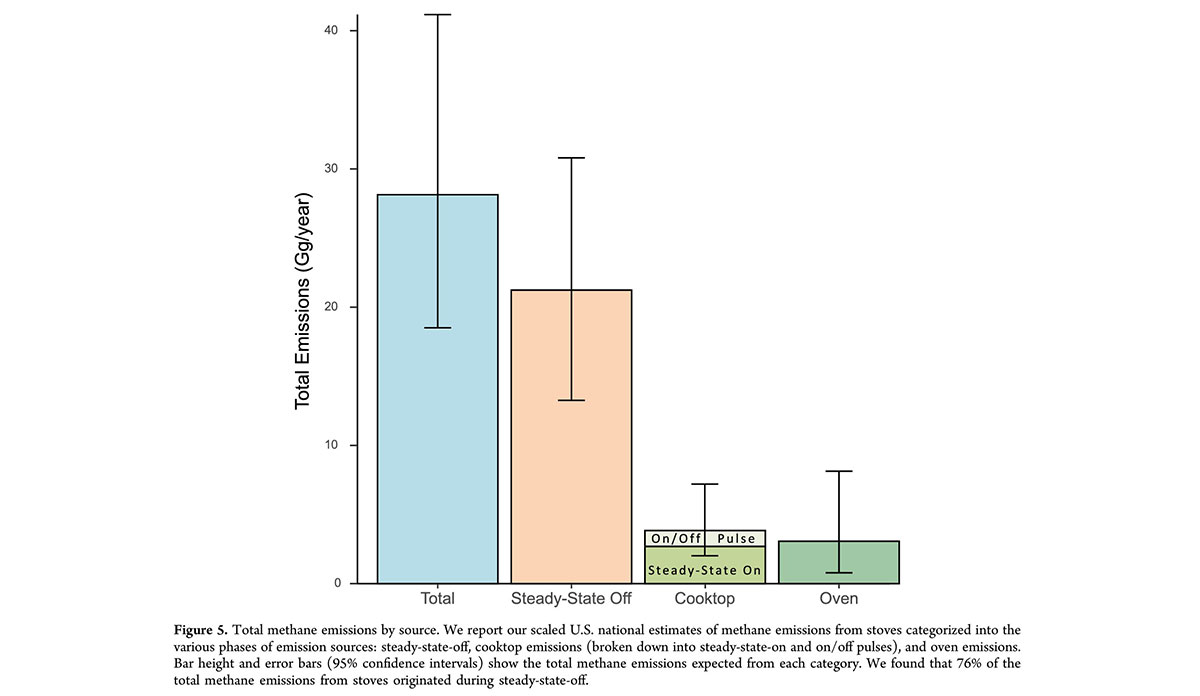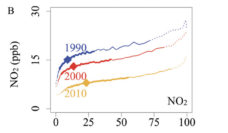You recycle and compost. You turn off the lights when you leave a room. You thrift your clothes. You save water. You make sustainable conscious choices to reduce your carbon footprint. All of these changes count, and all are positive. But you may be increasing your carbon footprint every minute of the day. Your gas stove is the culprit.
More than 40 million Americans have gas stoves in their homes. They are great for cooking and, on average, more affordable than electric. However, recent research has found that gas stoves leak methane, even when they are off.
Eric Lebel and colleagues collected data from 57 homes across California to measure methane emissions from gas stoves at every stage of operation: off, off and on, on, and oven. As the graph shows, 76% of methane leaks happened while the stove was off.
Based on their monitoring, they estimate that an average stove emits 649 g of methane a year. And national annual methane emissions from stoves add up to 28,100 metric tons. This is equivalent to the carbon dioxide emissions of 500,000 gas-powered cars.
Small amounts of methane are not toxic, but large quantities in an enclosed space can displace air and lead to suffocation. But home safety isn’t as big as a concern as the health of our planet. Methane is a greenhouse gas with an impact 25 times greater than CO2. So, even if small methane leaks are not detrimental to human health, they add up, and are terrible for the environment.
The solution is not to get rid of your gas stove. Rob Jackson, one of the authors of the study, recommends checking and tightening the pipes to ensure there are no leaks. For safety purposes, the American Gas Association recommends hiring a professional to do this. If you are a renter, ask your landlord to send someone to do a routine check. Either way, do your best to not let your stove thwart your personal sustainability goals.
Eric D. Lebel, Colin J. Finnegan, Zutao Ouyang, and Robert B. Jackson. Methane and NOx Emissions from Natural Gas Stoves, Cooktops, and Ovens in Residential Homes, Environmental Science & Technology, 2022.














